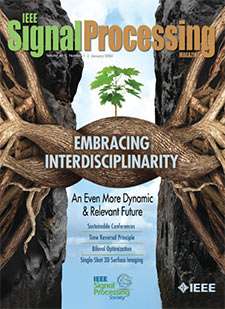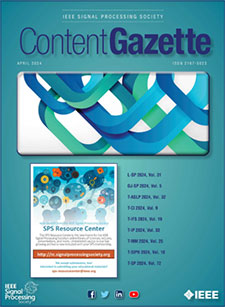Physics-Driven Machine Learning for Computational Imaging: Part 2
Top Reasons to Join SPS Today!
1. IEEE Signal Processing Magazine
2. Signal Processing Digital Library*
3. Inside Signal Processing Newsletter
4. SPS Resource Center
5. Career advancement & recognition
6. Discounts on conferences and publications
7. Professional networking
8. Communities for students, young professionals, and women
9. Volunteer opportunities
10. Coming soon! PDH/CEU credits
Click here to learn more.
Physics-Driven Machine Learning for Computational Imaging: Part 2
Physics-driven machine learning has found many applications in computational imaging
Thanks to the tremendous interest from the research community, the focus of the March issue of the IEEE Signal Processing Magazine is on the second volume of the special issue on physics-driven machine learning for computational imaging, which brings together nine articles of the 19 accepted papers from the original 47 submissions.
What makes computational imaging more exciting is its close relationship with real-world applications using imaging hardware. Unlike many other machine learning approaches to computer vision and image-processing problems that mainly deal with digitized images, machine learning approaches to computational imaging have their origins in real-world imaging hardware. Therefore, the physics-driven principle is tightly coupled to specific applications; hence, it is important to understand how the machine learning approaches can be integrated into the computational imaging pipeline using examples from real-world applications.
Therefore, the review and tutorial articles in this March special issue aim to provide an overview of the real-world applications of recently proposed physics-driven learning methods. Specifically, this edition aims to provide readers with more detailed information on how physics-based machine learning can be used to solve real-world imaging problems caused by electromagnetic (EM) waves, optics, and magnetic resonance imaging (MRI).
The first two articles focus on imaging problems from EM waves, which are widely applied in sensing for security, biomedicine, geophysics, and various industries. Specifically, the article by Guo et al. [A1] provides informative background on EM imaging and basic formulations of the inverse problem. The authors then focus on three types of strategies combining physics and machine learning for linear and nonlinear imaging and discuss their advantages and limitations. The next article, by Su et al. [A2], focuses more on terahertz frequency-band imaging problems. As terahertz waves can partially penetrate through varieties of optically opaque objects and the rotational, vibrational, torsional frequencies of a great variety of molecules fall in the terahertz regime, terahertz imaging has been extensively studied for industrial inspection, security screening, chemical inspection, and nondestructive evaluation. In this article, the authors provide a detailed survey how learning-based approaches can be utilized to terahertz image restoration and reconstruction.
SPS on Twitter
- DEADLINE EXTENDED: The 2023 IEEE International Workshop on Machine Learning for Signal Processing is now accepting… https://t.co/NLH2u19a3y
- ONE MONTH OUT! We are celebrating the inaugural SPS Day on 2 June, honoring the date the Society was established in… https://t.co/V6Z3wKGK1O
- The new SPS Scholarship Program welcomes applications from students interested in pursuing signal processing educat… https://t.co/0aYPMDSWDj
- CALL FOR PAPERS: The IEEE Journal of Selected Topics in Signal Processing is now seeking submissions for a Special… https://t.co/NPCGrSjQbh
- Test your knowledge of signal processing history with our April trivia! Our 75th anniversary celebration continues:… https://t.co/4xal7voFER














